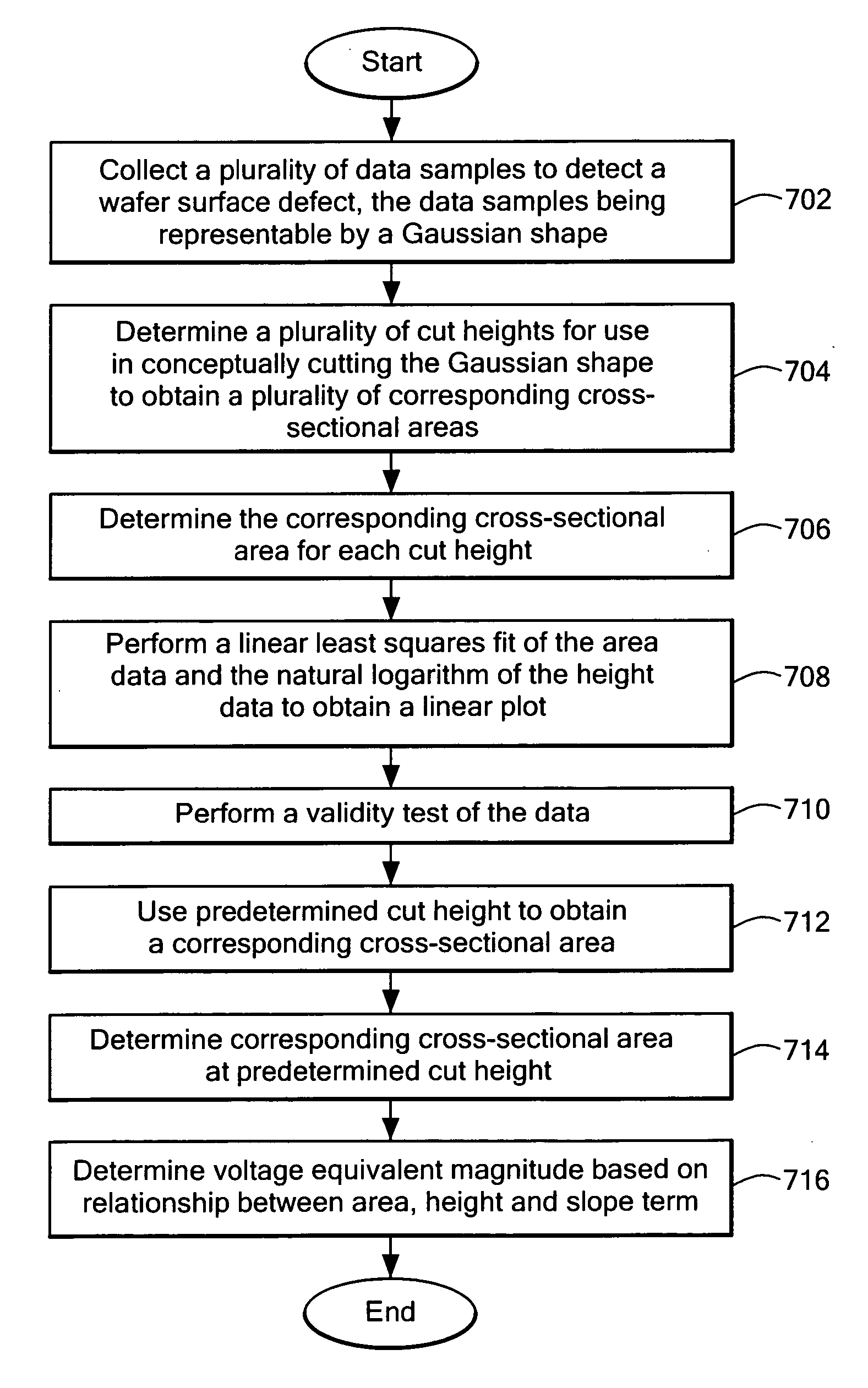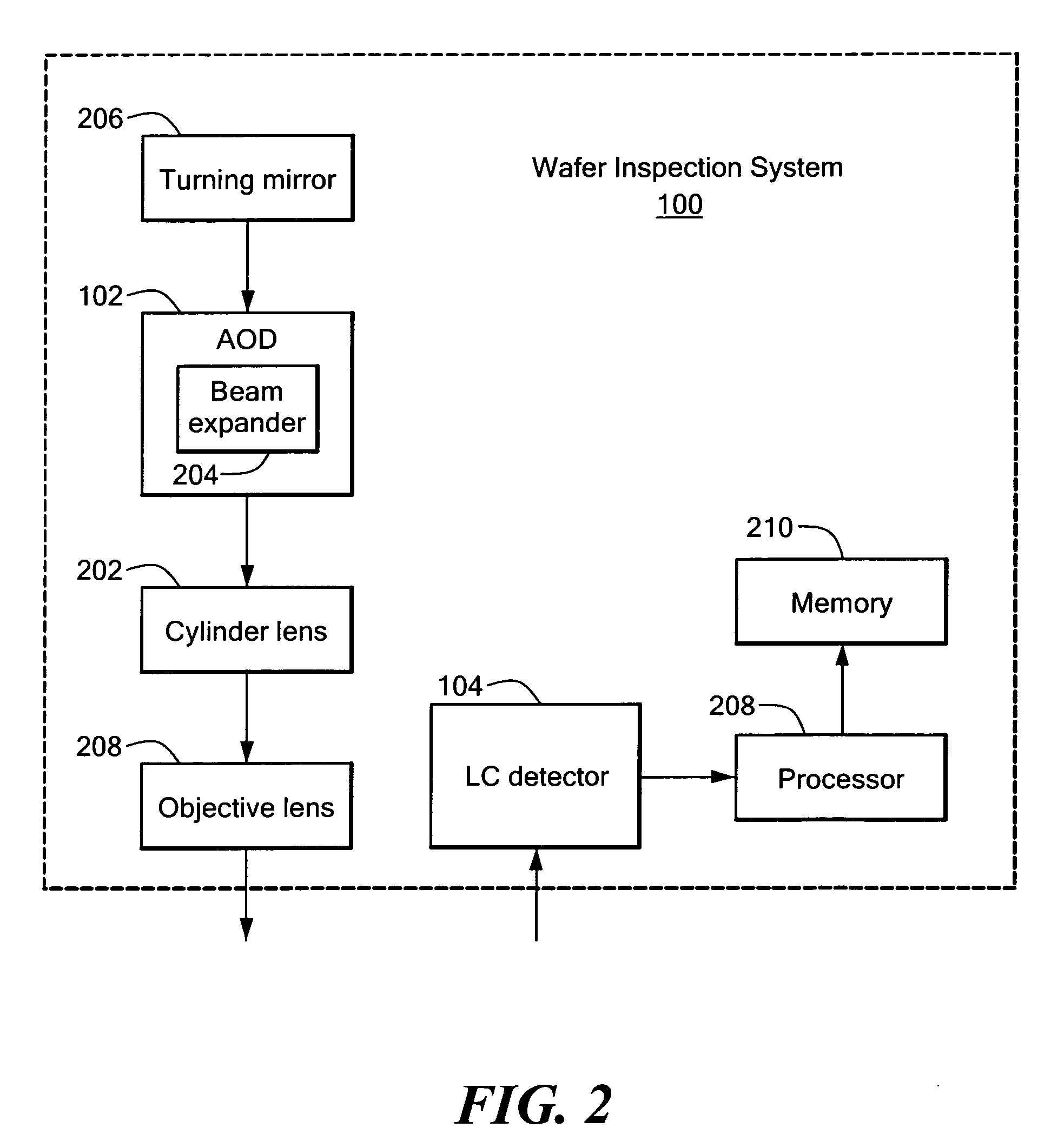Defect size projection
a technology of defect size and projection, which is applied in the direction of mechanical measuring arrangement, instruments, and mechanical means, etc., can solve the problems of high scattering power of detected defects, difficult data extrapolation techniques in conventional wafer inspection systems, and inability to achieve data extrapolation techniques. , to achieve the effect of improving the accuracy of defect detection, compromising the accuracy of technique, and improving the accuracy of detection
- Summary
- Abstract
- Description
- Claims
- Application Information
AI Technical Summary
Benefits of technology
Problems solved by technology
Method used
Image
Examples
Embodiment Construction
[0032] U.S. Provisional Patent Application No. 60 / 514,289 filed Oct. 24, 2003 entitled EXTENDED DEFECT SIZING and U.S. patent application Ser. No. 10 / 971,694 filed Oct. 22, 2004 of the same title are hereby incorporated herein by reference.
[0033] A system and method of inspecting a semiconductor wafer is disclosed that is capable of measuring the size and determining the location of a defect on a surface of a semiconductor wafer. The presently disclosed wafer inspection system can perform such sizing and locating of wafer surface defects whether or not the scattering power associated with the defect exceeds the dynamic range of the system.
[0034]FIG. 1 depicts an illustrative embodiment of a laser-based wafer surface scanning inspection system 100, in accordance with the present invention. In the illustrated embodiment, the surface scanning inspection system 100 comprises an optical module including a surface scanning mechanism 102, and a light channel (LC) detector including LC op...
PUM
| Property | Measurement | Unit |
|---|---|---|
| angle | aaaaa | aaaaa |
| incident angle θi | aaaaa | aaaaa |
| diameter | aaaaa | aaaaa |
Abstract
Description
Claims
Application Information
 Login to View More
Login to View More - R&D
- Intellectual Property
- Life Sciences
- Materials
- Tech Scout
- Unparalleled Data Quality
- Higher Quality Content
- 60% Fewer Hallucinations
Browse by: Latest US Patents, China's latest patents, Technical Efficacy Thesaurus, Application Domain, Technology Topic, Popular Technical Reports.
© 2025 PatSnap. All rights reserved.Legal|Privacy policy|Modern Slavery Act Transparency Statement|Sitemap|About US| Contact US: help@patsnap.com



